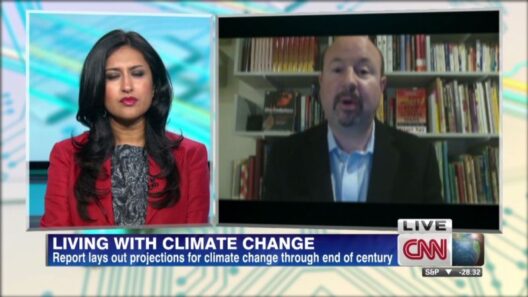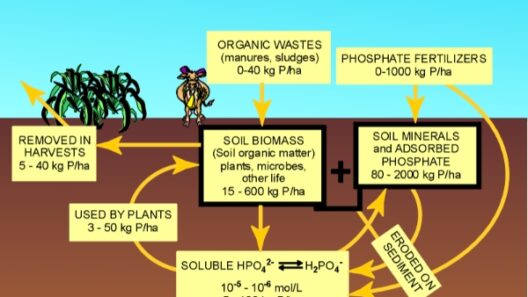Florida, often affectionately dubbed the Sunshine State, is not just known for its balmy weather, attractive beaches, and vibrant tourist attractions; it’s also a focal point in discussions surrounding climate change and global warming. The state’s geographical characteristics and extensive coastline make it particularly susceptible to the ravages of climate change, particularly in the form of rising sea levels and devastating flooding. The question that hangs in the air is: how long until the effects of global warming will drastically transform this beloved state?
To comprehend Florida’s impending fate, one must first consider its geographical predicament. With over 1,300 miles of coastline and a vast network of wetlands, the state is cradled by the Gulf of Mexico on one side and the Atlantic Ocean on the other. This delicate positioning places Florida at the frontline of climate-induced encroachments. As global temperatures rise due to greenhouse gas emissions, glaciers and ice caps melt, contributing to a significant rise in sea levels. Predictions from climate scientists suggest that, by the year 2100, sea levels could rise by as much as six feet if emissions continue unabated. For Florida, this would be catastrophic.
One of the most alarming observations involves the current rate of flooding. Historically, Florida has experienced its fair share of intense storms and hurricanes. However, the frequency and intensity of these events are becoming more pronounced due to climate change. The increasing warmth of ocean waters serves as fuel for tropical storms, leading to hurricanes that are not only stronger but also more damaging. Rising sea levels intensify the impacts of storm surges, flooding coastal towns and residential areas with an unrelenting ferocity. Recent events have shown entire neighborhoods submerged, leading to widespread destruction and displacement.
Furthermore, the state’s infrastructure is under siege. Many cities, such as Miami and Tampa, are now grappling with “sunny day flooding,” a phenomenon where high tides inundate streets, disrupting daily life. The result is a toxic cocktail of infrastructural strain and public health risks. As saltwater seeps into freshwater supplies, the quality of drinking water becomes compromised, posing significant health concerns for residents. Moreover, the economic implications are staggering, as tourism—Florida’s main industry—may diminish if the climate crisis continues to escalate.
However, the conversation on Florida’s future must delve deeper than mere statistics and forecasts. The fascination with Florida’s plight is equally rooted in the cultural and historical significance of the land itself. The state is home to diverse ecosystems, from the Everglades to the coral reefs that line the coastline. These natural wonders offer profound ecological benefits, acting as vital carbon sinks that mitigate climate change. At the same time, they are threatened by rising waters. The deterioration of habitats not only endangers flora and fauna but also erodes the cultural identities tied to these ecosystems for local communities.
Florida’s agricultural sector, which relies heavily on its rich soils and favorable climate, is equally vulnerable. Crops like oranges, key to the state’s economy, face potential disaster from increased salinity and uncharacteristic weather patterns. Farmers may find themselves grappling with erratic growing seasons and diminished yields, leading to food insecurity and economic instability.
In addressing the fate of Florida, it becomes essential to highlight the legislative and community responses to this existential crisis. Grassroots movements, alongside governmental initiatives, are burgeoning in Florida as citizens mobilize to advocate for sustainable practices. These efforts encompass a broad spectrum: promoting renewable energy, advocating for stricter emissions regulations, and fortifying infrastructure to withstand climate impacts. Furthermore, interagency cooperation is becoming increasingly crucial; local governments, state agencies, and federal entities must come together to develop comprehensive strategies aimed at mitigating climate threats.
Experts argue that adaptation must supplement mitigation strategies. Florida needs robust defense mechanisms—barrier systems, enhanced drainage, and restoration projects aimed at rebuilding natural defenses like mangroves and wetlands. The public must engage in sustainable practices, such as reducing waste and advocating for green policies. Each action, while seemingly small, contributes to a larger goal of resilience against climate change.
While the situation is understandably dire, it is essential to recognize that there is still time to avert the worst effects of climate change. The proactive measures taken today can forge a path toward a future where Florida remains a vibrant and cherished destination. Nonetheless, the urgency cannot be overstated; the time for action is now. Engaging communities, educating residents, and fostering sustainable development are integral to preserving this unique state.
In conclusion, Florida’s fate in the face of climate change hinges on a complex interplay of natural vulnerabilities, societal responses, and proactive measures. The clock is ticking, and the consequences of inaction are glaringly apparent. As both locals and visitors cherish the rich tapestry of life Florida offers, the stakes have never been higher to advocate for its future, ensuring that generations to come can experience the joys of the Sunshine State without the shadow of looming environmental catastrophe.








